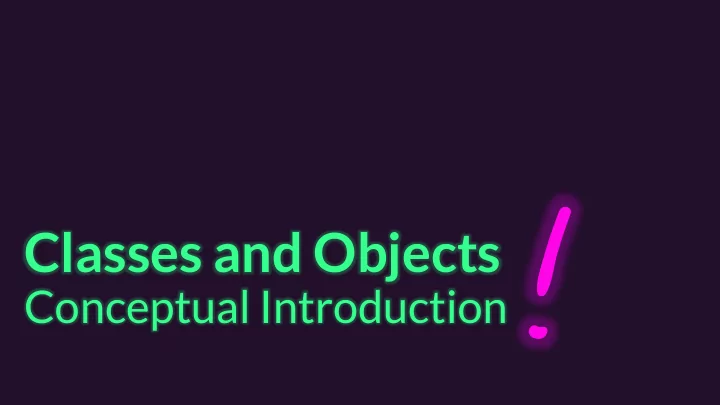

Classes and Objects Conceptual Introduction
You can define your own data types! • A data type communicates a value's attributes and capabilities • e.g.: If you have a value of type int, you know you can do arithmetic with it • So far, you've primarily used built-in data types (exception: custom Tuples) • You will often need to model more complex concepts • Some real-world examples: Twitter Profiles, Pizza Order, Data Records • A class is how you define a custom, composite data type. • Its attributes are a grouping of variables. • A value whose data type is a composite is an object . • Anything bound to an object (variables, items in a list, and so on) holds a reference to the object.
What is this? A A "Cla lass"! • Classes aren't actually visual templates. • They're definitions of what a specific composite data type is. • However, this is a useful analogy: Twitter Profile Template : @KrisJordan's Profile :: Class : Object
What are these? "Objects"! (They're all Twitter profiles.)
How would you model a TwitterProfile in code? • The exact syntax will be covered in the next video. • The big idea is you can "bundle" many related variables into a single data type. • These variables are attributes of the TwitterProfile class. class TwitterProfile: name: str handle: str bio: str show_vine: bool is_private: bool followers: int following: int
Each Cla lass Obje ject's 's attributes are established by its Each object's attributes are like a bundle of variables. Notice each object has its own values for each attribute.
Classes vs Dictionaries • Attributes must be valid identifiers • Keys are any immutable type • e.g. str, float, int, Tuple of immutables • str keys are not limited to identifier rules: can have • Attributes are individually typed spaces, special characters, and so on • All values associated with keys are of a single type* • All objects of a class have the same • No guarantee any two Dictionaries attributes* defined have the same keys • Useful when: attributes of model • Useful when: keys ("attributes") of have different types and are known model are unknown ahead of time ahead of time and of the same type * When writing well formed, type annotated Python programs.
Recommend
More recommend